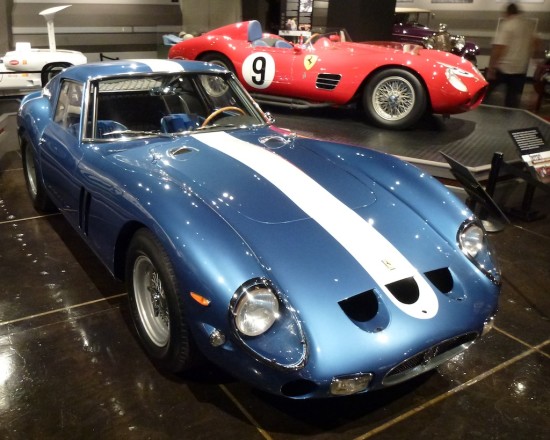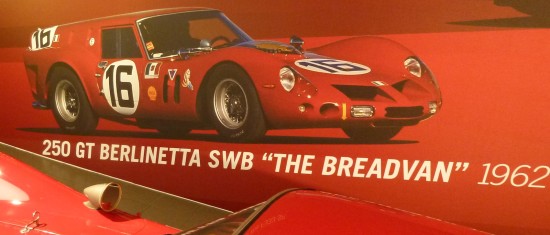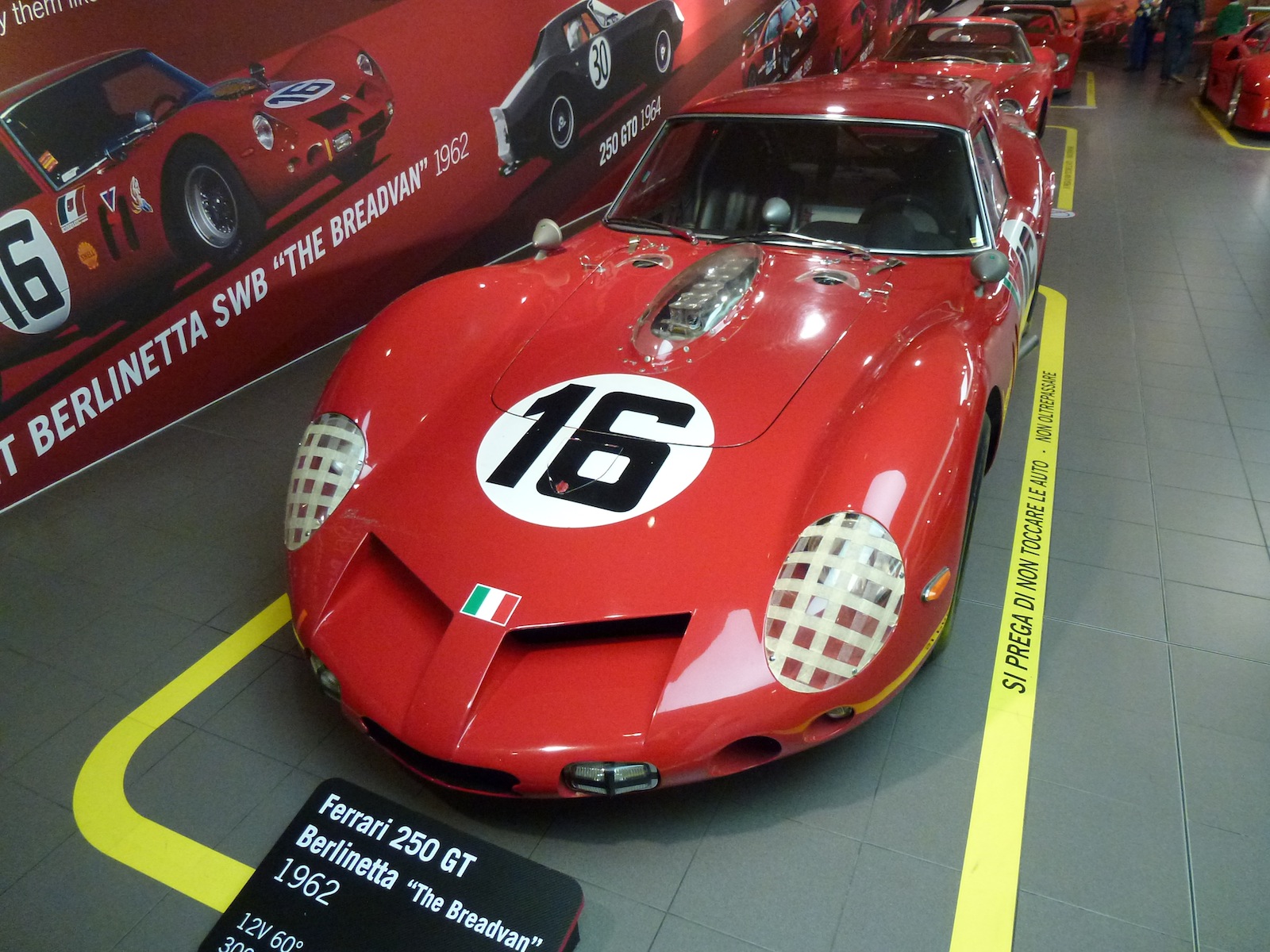by Mike –
The passage of time leads to incomplete memories, sometimes controversy, almost always unanswered questions and often unanswerable questions.
After reading my recent article, Giotto Bizzarrini – A Body Designer? – Oh Yes, Chris posted this in the Comments section,
I’m not sure that Giotto had much (if anything?) to do with the final shape of the GTO. Indeed, the GTO test mule he developed was so ugly it was nicknamed “Il Mostro” (the Monster). Giotto himself said he was no designer, but an engineer. The proof was, Il Mostro was mechanically and aerodynamically effective enough for Moss & Mairesse to be several seconds quicker per lap around Monza than with the previous 250GT SWB.
Also, I think Giotto may have left Ferrari (November,1961) before the shape of the GTO was finalised.
Chris
What Chris says is certainly consistent with what Winston Goodfellow wrote on page 18 in Bizzarrini, a technician devoted to motor-racing.
However, on page 49 of Rebel Rebel by Marc Sonnery, Giotto Bizzarrini had this to say,
“My interest in aerodynamics began when I developed sport and GT cars at Ferrari.
Hence, I initiated my experiments by modifying the profile of the bodywork starting with the 1958 Testa Rossa. The opportunity for an all-new body came when the Commendatore Ferrari asked me to make a new GT. I thus built the GTO prototype, beginning with moving the engine backwards to obtain simultaneously a better hood profile (by lowering it) and a better weight distribution. Since we were unable to shift the position of the driver, the extent of the engine’s backward shift was determined by the driver’s feet.
The Breadvan is an evolution of my aerodynamic research, started with the TR58, as was the Bizzarrini GT Strada later on. The points on which they differ are due to the types of chassis and, for the Bizzarrini, to the fact that it was destined for road use.”
I am interpreting a little but I think that if Bizzarrini was involved in the body design of the Ferrari TR58 and he was the chief engineer of the Ferrari 250 GTO some time later then I believe one can conclude that Bizzarrini had a lot to say about the body design of the GTO and not just the one ugly prototype – but the final beautiful result.
The way the engineers and designers worked in those days is described by Giorgio Neri (being interviewed by Marc Sonnery) on page 50 of “Rebel Rebel”,
Marc Sonnery: Ingegnere Giotto Bizzarrini came up with the original idea regarding the Breadvan for Count Volpi, but he did not do the actual design, drafts.
Giorgio Neri: No, he did not do the designs.
Sonnery: So you had carrozzieri (bodywork specialists) who worked …
Neri: Yes, yes they worked for us, and when we had an idea, even if there were no drawings, we would move forward like that, by eye, doing modifications as needed step by step while the piece was being built. That is how we operated.
Sonnery: Yes, so that body for the Breadvan, Ingegnere Bizzarrini said do something with a truncated tail …
Neri: Yes
Neri was talking about the Breadvan but I believe this is likely the method used for the GTO as well by Giotto Bizzarrini and Sergio Scaglietti. It is known that Scaglietti’s style of body design was to hammer the beautiful shapes into aluminum directly from his head – without drawings.
Maybe in this case; the GTO came from Bizzarrini’s head – or most likely from both of their heads.





Having done some more research, I can now maybe add a little more to the debate.
According to Mauro Prampolini, who at the time was a top welder at Ferrari, and who built the first GTO with five others, Giotto was involved almost to the end with the GTO project. After he left Ferrari, Forghieri added the dry sump and the 5-speed gearbox.
In the book I have on the GTO by Keith Bluemel and Jess Pourret it states that “Scaglietti was given the job of refining the GTO body shape into a respectably finished design for production, which the craftsmen did in their usual manner, by eye, not using drawings.”
Looking at pictures of Il Mostro at Monza in September 1961 (a couple of months before Bizzarrini departed Ferrari) it is clear that there are already strong similarities to the final definitive shape, especially around the nose. The side window shape and the rear, particularly, are still a long way off the final shape. The windscreen lies at a more acute angle, which was later changed to a more upright position, something Scaglietti never approved of, apparently. I was interested to read this, as I have always thought that if you lopped a couple of inches off the top of the screen on the GTO, giving a lower roofline, you would have an even more beautiful car! (Heresy, I know!!)
It is my understanding that Giotto was first and foremost an engineer, with performance his ultimate goal, which included great attention paid to aerodynamics, of course. The fact that beautiful cars often resulted from this approach is an incidental bonus. I don’t think Giotto ever claimed to be a stylist, and although he doubtless had strong views on how his designs should look (always subservient to aerodynamics) he left it to others such as Scaglietti and Drogo to refine the final shapes that we know and love.
I think we are a little in danger of crediting Giotto Bizzarrini with being another Giugiaro or Michelotti, which I think he would be the first to refute. After all, his great achievements in chassis, engine, and race car design are legacy enough for any man
Chris.
Chris,
Thank you for your very thoughtful comments. Clearly you have an interest in this subject as deep as mine.
I agree that Giotto Bizzarrini was first an engineer with the top priority of race car speed and not style or beauty and Bizzarrini did not claim to be a body stylists, I also agree.
However, I don’t think we can credit him with too much based on the information available – I think he takes credit for too little. His input to the engineering parameters led to the final body style and he does not get credit for that even though there is evidence in the historical records to support that claim.
I also have a private communication from someone with knowledge of Bizzarrini cars through decades of ownership who has an opinion about aerodynamics.
This will be the subject of yet another article on My Car Quest because it is beyond the scope of the Comments section.
Stay tuned for more on this in the next few days. When I met Giotto Bizzarrini a few weeks ago in Livorno we did not discuss this fascinating subject because he does not speak English and I do not speak Italian – c’est la vie.
Mike,
I think we both agree that Giotto’s pragmatic approach to aerodynamics did result in at least the basis for some very beautiful cars (though I’m not sure you’d find too many who think the Breadvan beautiful, aerodynamically efficient though it undoubtedly is). Malcom Sayer’s aerodynamic approach to styling (all done mathmatically!) resulted in some gorgeous shapes for Jaguar – C-Type, D-Type, E-Type, XJ13 racer).
The flat vertical flanks of the Bizzarrini Strada are aerodynamically necessary (look at all the CanAm cars that had flat sides) though I’ve met several people who would prefer more roundness in that area (though I’m not one of them). Some of the Diomante fibregalss cars do have more tuck under on the sills (rocker panels). But they’re not built for racing, I guess.
Chris